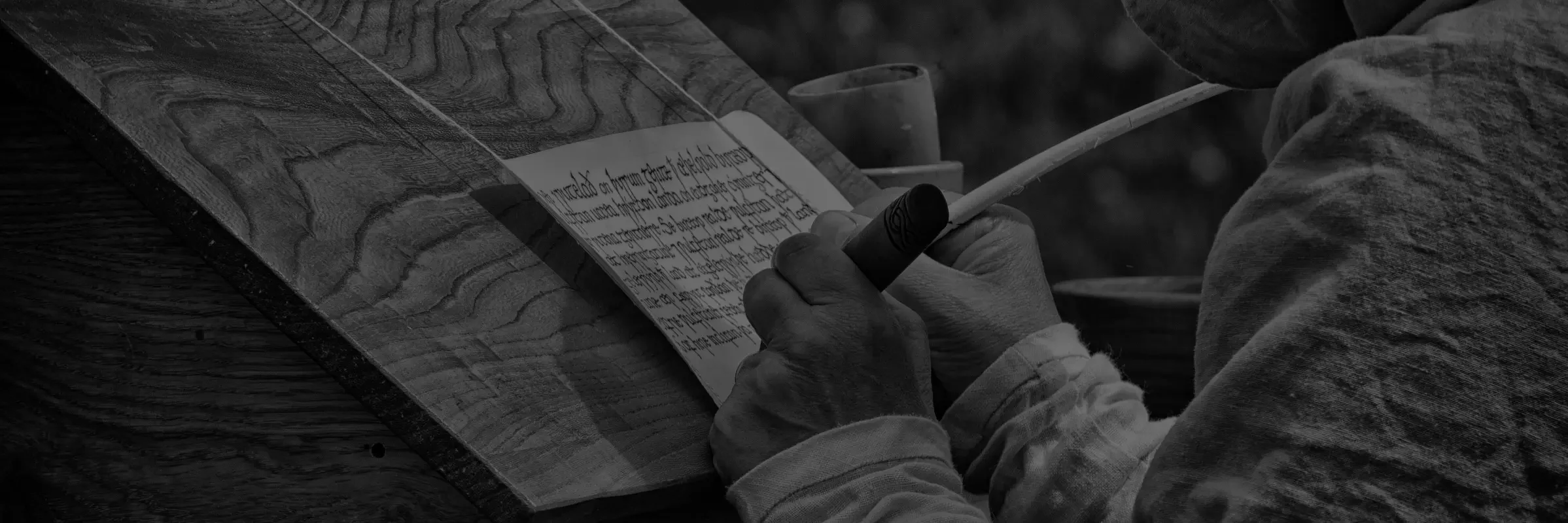Wirral's Hidden History Revealed
Anglo Saxon Military Tactics
Like all armies, the fighting techniques and military organisation evolve and adapt over time and through lessons learnt. The Roman army of Julius Caesar would not have been recognisable to Roman armies of the 2nd or 5th centuries. Nothing with regards to the military is constant and they constantly develop and adapt to whatever the current or likely threats may be.
Anglo Saxon Cavalry
Despite assumptions made by many historians that the Anglo Saxons did not use cavalry the evidence suggests that they did.
Compared to the studies of the militaries of the ancient world, where cavalry were used by the Greeks, Persians, Romans and the steppe peoples, like the Sarmatians, little is known about Anglo Saxon battle tactics, let alone, about their use of cavalry.
Anglo Saxon and Viking Warfare
Despite popular myth, the Vikings were not invincible. From the time of Alfred the Great’s victory at Ashdownin 871 the Anglo- Saxons had realised that unity and the implementation of the ‘Burgh’ or Burghal Hidage system would enable them to counter and usually defeat Viking armies.
Aethelflaed and Athelred
If you’ve been watching the Last Kingdom lately, you will have seen that Athelred is portrayed as a monstrous and cruel character who mistreated Aethelflaed and humiliated her at every opportunity.
There is no truth in this and in fact the evidence that is available indicates that they had a healthy relationship.
The boat beneath the car park.
In 1938 workmen who were building the Railway Inn at Meols found what they described as “a Viking boat” in one of their excavations. They were told to ignore it and get on with the work of building the pub. No other investigations were carried out. A year later World War II started so there were other more urgent priorities to deal with.
Wirral Archaeology and the Search for the Battle of Brunanburh
For centuries, Historians, Scholars and Antiquarians have debated and argued as to where the battle took place. Academics too, have studied the various chronicles and many have advocated several locations with many placing the battle as having been fought on the East Coast, near the River Humber or in Lancashire, near Burnley. Other locations claim the battle, but the current Academic consensus, is that it was fought on the Wirral.
The Cheshire Shore
Wirral has a fascinating history along our sea-coast to the Irish Sea that has been long forgotten by most people including communities living in the area. We hope that this project will help to revive interest in the history of this area, and its place in our local and national heritage.
The Irish Sea coastline that we see now was very different in the past and extended much further out to sea. The coast has been gradually eroded away by the sea over the centuries, and the erosion would have continued to this day without the construction of the sea wall along most of the coastline. Many places that were once inhabited have been inundated. The township of Meols itself has probably migrated inland over the centuries as the sea gradually took away the land.

